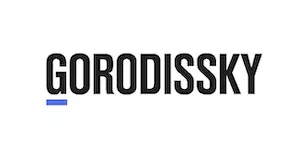The world hinges on patents. A patent puts the owner on the forefront of technological edge. It provides unmatched advantages for the patentee, be it legal monopoly of use or prohibitive function of the patent. Criteria for a patentable invention in Russia are not unusual. These are industrial applicability, novelty and inventive step. It would seem that anything may be patented but anything will not go. There are subject matters which are not patentable, such as discoveries, scientific theories and mathematical methods, business methods, solutions contrary to public interest, humanity and morals, methods for human cloning, for modifying the genetic integrity of cells and some other solutions which the human mind may beget. Inventions concerning software are not patentable either, though to an extent because computer-related inventions involving hardware are patentable. Animal and plant varieties are patentable but not as inventions. Patents for this subject matter are granted by the Ministry of Agriculture.
As has been noted, an invention shall be new to be patentable (the world novelty requirement). Novelty is not compromised however if the invention is disclosed for whatever reason by no matter whom (who obtained information from the inventor) and the application is filed with the Patent Office within the grace period, i.e. six months of the disclosure of information. Similarly and within the same six months after disclosure a patent application may be filed to the Eurasian Patent Office (in which case six months are counted back from the priority date) which grants a unitary patent covering several CIS countries.
Once filed, a patent application is published after 18 months which makes it possible for any person to present his/her opinion to the patent office on the patentability of the invention. The patent office will consider these observations during examination of the application and may (or may not) take them into account while issuing an official action. The whole procedure of examination from filing to grant is relatively short and is approximately one and a half years (this is when the request for a substantive examination is filed immediately. Otherwise it may be filed during three years from filing). The cost associated with the filing and prosecution of an application and grant of a patent is between $3,500 and $6,000, including official fees and agent fees. Translation will add to that cost.
If the patent has been granted it does not mean that it will live during its assigned term. If there has been a mistake on the part of the examiner and the patent was granted in violation of e.g. patentability requirements it still can be cancelled. There also exist other grounds for invalidation, such as non-compliance with disclosure requirements, presence of features which did not exist in the application on the filing date, etc. Even if the patent is dead it still can be invalidated retroactively (e.g. respondent in an infringement suit may do that).
It is clear that a patent is not obtained for the sake of having it. The patented invention will most probably be used and bring rewards to the owner. The more useful the invention the more chances are that it may be infringed, especially if it does not involve sophisticated technology. Then, another part of the law goes into play - enforcement. There are some preliminary steps which should be followed before attacking the infringer. In the first place the patent owner should confirm for himself that the patent is indeed infringed. Every feature in the independent claim (or one equivalent thereto) should be used in the allegedly infringing product. If at least one of the features is not used there is no infringement. After that evidence of infringement shall be collected and properly documented. Next, a warning letter may or should be sent to the infringer. "May" is applicable to the end of June of 2016. From June 1, 2016 such letter becomes a "must". In practice however practicality of such measure was confirmed in many cases. It is cheap and in every third or fourth case it stops infringement. If the warning letter does not work the patent owner should be prepared to initiate a court action. He already has the evidence, so only a court suit should be prepared and filed to the court with a copy of the suit to the defendant. The suit shall be accompanied by original or apostilled documents which prove the fact of infringement. If applicable, preliminary injunction may be sought from the court. When a court action should be initiated is to the discretion of the patent owner. The limitation of action is three years from the date when the patentee learned or should have learned of the infringement. Sometimes it is not economically efficient to start an action immediately after discovering the infringement. Sometimes it is useful to wait, monitor and continue documenting the infringement in order to be able to claim more damages. Should it be difficult to prove damages the law allows the patentee to claim a so called compensation. The amount of possible compensation which may be claimed is up to 5 million rubles or the double value of the right to use the corresponding patent based on the price that is usually charged for the lawful use thereof. The exact amount will be determined by court on the basis of facts of the case. So, some description of damages should be given to the court in order for it to award a higher amount of compensation.
When the IP owner is poised to litigate the choice of forum is required. There are common courts and commercial courts. The common courts have jurisdiction over cases where at least one party in the dispute is a natural person. The commercial courts have jurisdiction over cases involving legal entities. Since patent owners are mostly legal entities the commercial courts are involved in litigation for the most part.
The commercial court structure has four levels:
- the commercial courts of the constituent units of the Russian Federation (first instance);
- the commercial courts of appeal (appeal);
- the IP Rights Court (cassation); and
- the Supreme Court (second cassation and supervisory instance).
Statistics show that only 20 percent of judgments of the first instance courts are appealed. Only selected cases are appealed in the Supreme Court. If the patent owner decides to litigate he should file a claim to the court located at the residence of the infringer. If all the documents on file are in order the claim is accepted and the court sets a date to meet with the parties and schedules a preliminary hearing. After meeting with the parties and holding a preliminary hearing, the judge appoints a substantive hearing. In a general case the judgment is issued not longer than after three or four months after filing the claim if no complicating circumstances intervene. The respondent may delay proceedings by failing to appear in court. The court is not obliged to postpone the hearings but often does. One of the parties may ask for adjournment in order to submit additional evidence or technical expertise may be sought by the parties. In any case this is the prerogative of the court to allow adjournment or not.
When the respondent is attacked in court he may try to invalidate the relevant patent. Invalidation may be sought if the patent does not meet criteria of patentability (novelty, inventive step and industrial applicability) or if the application materials submitted at the date of filing do not meet the disclosure requirements (in these cases invalidation is asked from the patent office), and in some other cases.
Technical expertise is often ordered by court because the judges often have no special technical background. Usually, parties submit expert candidates to the court for approval. When appointing an expert, the courts will evaluate his or her professional experience and skills. In some cases the parties do not file motions for examination. In this situation, the court may render a decision based on other documents submitted by the parties.
The IP court is built into the structure of commercial courts. In case of infringement the IP court acts as a cassation instance. Some patent cases, which do not concern infringement, the IP court examines in its capacity as a first instance court. Such cases are those which come from the patent office, i.e. appealing the decisions of the patent office, issues of inventorship, ownership, etc. The IP court also handles patent revocation cases that have first been examined by the appeal board of the patent office. Some IP Rights Court judges have both a legal and technical background. The technical background of the new judges is considered when appointing them.
Going back to infringement it should be noted that such cases are normally examined by one judge at the commercial courts except where the case is of a complex nature. Appeal and cassation IP court cases, as well as those under supervisory review, are considered by a panel of three judges.
When there is a patent dispute it often happens that the doctrine of equivalents is invoked. The doctrine of equivalents applies to Russian and Eurasian patents (infringement of a Eurasian patent is examined in each member country separately) and is applied where it is necessary to establish the use of an invention in a particular product or process.
While initiating and handling a patent infringement case a preliminary injunction may be obtained at any stage of the proceedings in order, among other things, to prevent the defendant from using the alleged product or process until the court issues a judgment. However, the patentee must show that the court judgment will not be enforced if the motion is not granted or that the absence of a preliminary injunction would cause substantial damage to the patentee.
During the patent infringement case the respondent may try to invalidate the patent. These are two separate procedures. Patent invalidation is handled by the Patent Office. The fact that the respondent started invalidity procedure cannot be used as defense during a patent infringement case.
A civil court case allows the plaintiff not only to claim damages but also recover expenses from the respondent the patent owner made to restore justice. The expenses should be reasonable though. The infringing products may be destroyed if that is claimed by the patent owner.
The Russian judicial mechanism operates relatively quickly. A judgment of a first instance court will be obtained in four months on average. Appeals will require about the same time. If technical expertise is ordered by court the time scale may be longer.
Court expenses are also moderate. Litigants should expect to pay approximately $35,000 to take a case through to a first-instance decision.
Aside from a regular court action the patent owner may use mediation procedure. The parties may refer a dispute to mediation by concluding a mediation agreement before or after the dispute has arisen. Parties are also entitled to enter into meditation agreements after the dispute has been brought before the court. The Law on Mediation provides no compulsory legal grounds for mediation in cases where no agreement to mediate has been concluded. Where mediation is initiated after a statement of claim has been filed, parties can engage professional mediators only. The mediators must keep all information obtained in the course of mediation confidential.
Hence, the law provides an ample range of opportunities to protect one's IP rights.
The content of this article is intended to provide a general guide to the subject matter. Specialist advice should be sought about your specific circumstances.


